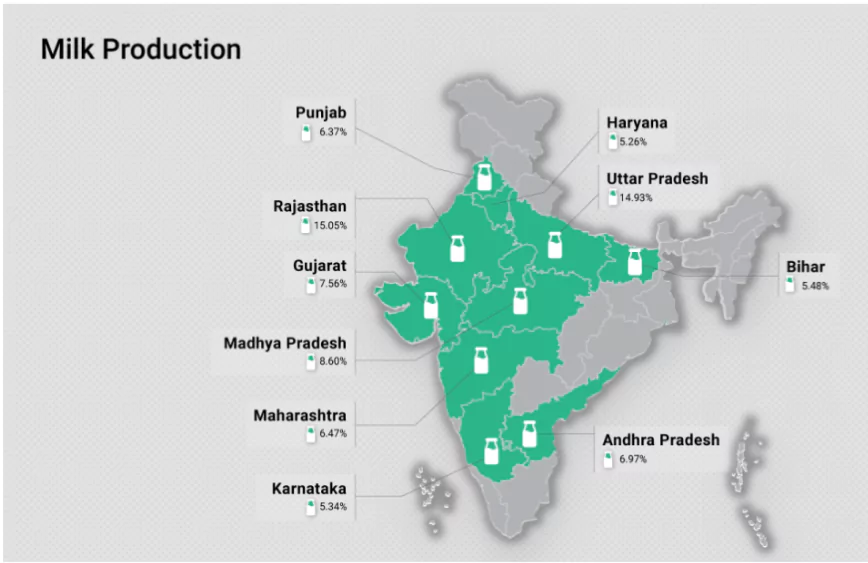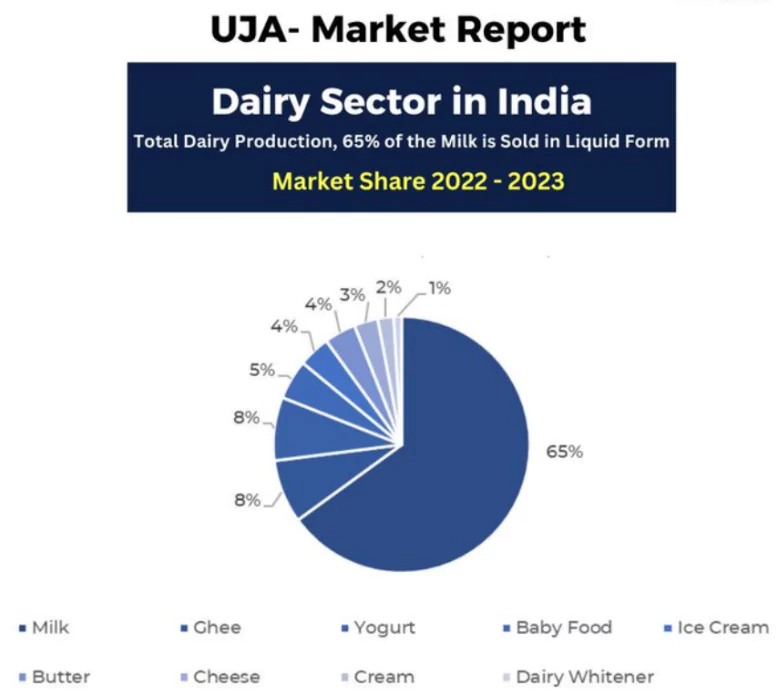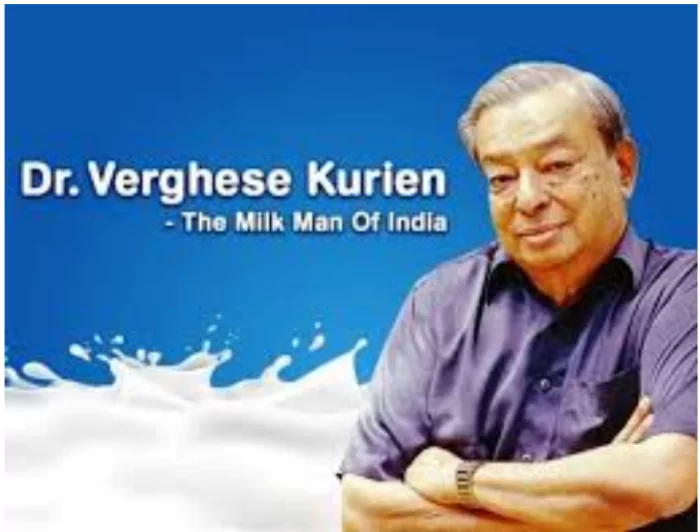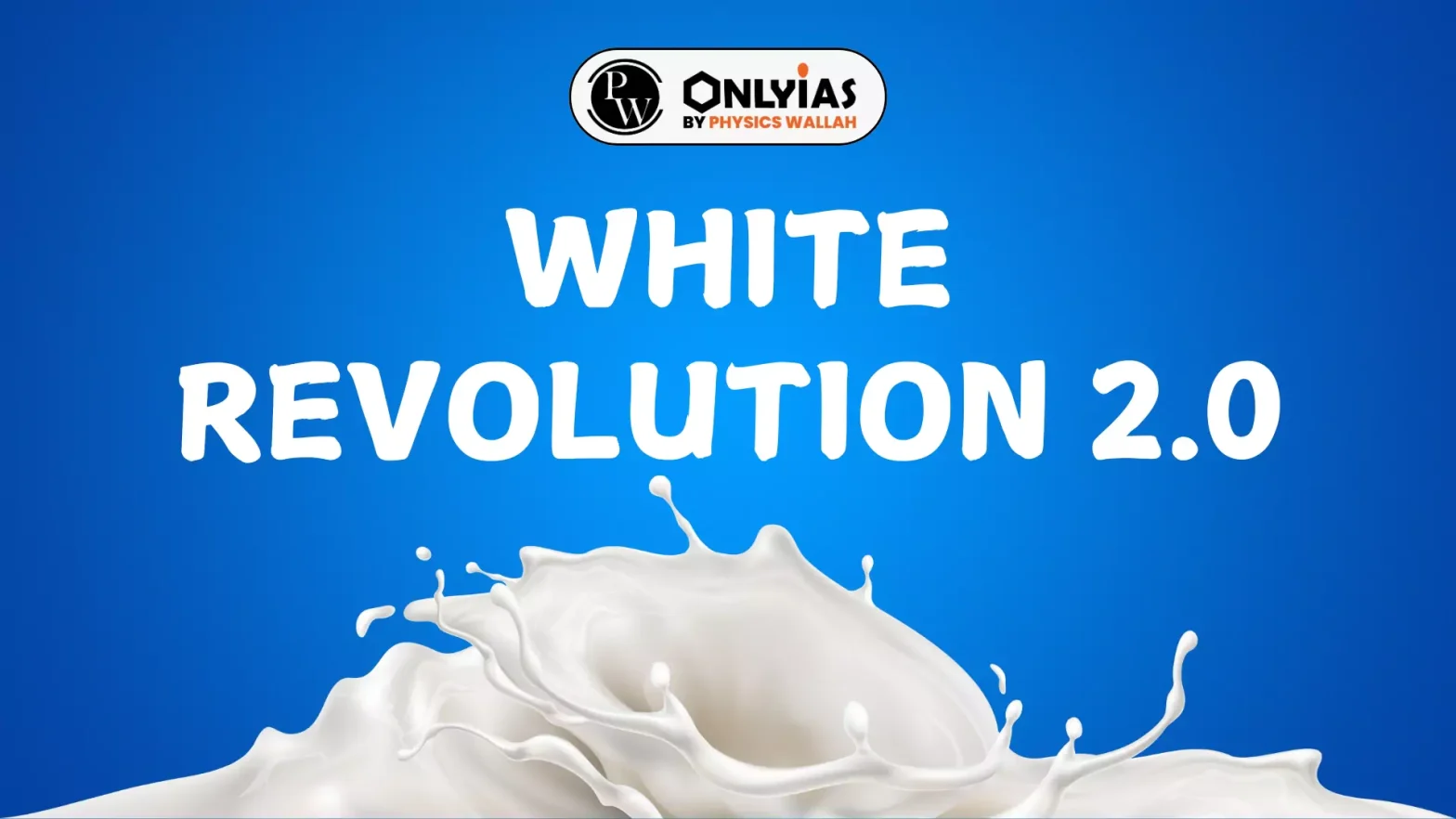The Union Home and Cooperation Minister has launched 3 new initiatives taken up by the Ministry of Cooperation as part of the first 100 days of the third NDA government.
- Launching of the ‘White Revolution 2.0’
- Launching Standard Operating Procedure for ‘Cooperation among Cooperatives’.
- The ‘Margdarshika’ for the formation and strengthening of 2 lakh new multi-purpose Primary Agricultural Credit Societies (MPACS), Dairy and Fishery Cooperatives has also been launched.
About White Revolution 2.0
The programme focuses on four key areas – empowering women farmers, enhancing local milk production, strengthening dairy infrastructure, and boosting dairy exports.
- Women Empowerment: To empower women milk farmers and further strengthen the fight against malnutrition by including them in the ambit of formal employment as the money will be deposited in their bank accounts.
- Enhance Local Milk Production: It aims to increase the Cooperatives led procurement from the present 660 lakh litres per day to 1,000 lakh litres.
- Strengthen Dairy Infrastructure :
- The release of standard operating procedures for the computerisation of 67,930 primary agriculture credit societies (PACS).
- To set up or strengthen 1,00,000 new and existing district cooperative societies, multi-purpose district cooperative societies and multi-purpose PACS, with necessary infrastructure so that they are able to procure milk directly from farmers.
- Boost Dairy Exports: India aims to account for one-third of the global milk supply by 2030 which currently accounts for about one-fourth of the world’s milk production
- India’s dairy exports are expected to grow at a rate of 13% from 2024 to 2032.
Enroll now for UPSC Online Course
The Cooperation among Cooperatives Initiative
- The ‘Cooperation among Cooperatives’ initiative, which was successfully piloted in two districts of Gujarat ie. Panchmahal and Banaskantha will now see a nationwide expansion.
- A district will be made the unit for this program.
- Features:
-
- Financial Inclusion: The programme will provide interest-free cash credit to dairy farmers through RuPay-Kisan Credit Cards and distribute micro-ATMs to bring banking services to farmers.
- Women inclusion: Debit and credit cards will be provided to the women in Primary Cooperative Society and Milk Producers Committee making them financially resilient.
- Cooperative Database:
- The Ministry of Cooperation has made the cooperative database on the level of ( Panchayat, Tehsil, District and State) available to the District/State Cooperative Register and in the District Cooperative Bank branches.
- The move will ascertain the total number of cooperative societies in a district, their types, their audit works etc
The Margdarshika
- The Ministry plans to strengthen 100,000 new and existing district cooperative societies, multi-purpose district cooperative societies, and multi-purpose Primary Agriculture Credit Societies (MPACS), which will be linked to milk routes with necessary infrastructure.
- Funding: The National Dairy Development Board (NDDB) will fund the initiative providing Rs 40,000 per M-PACS to 1,000 M-PACS.
- Strengthening the PACS Network:The PACS have been linked with 25 different types of works to make them viable entities like giving short term loans for agriculture, dairy, fisheries, warehouse, cheap grain shop, cheap medicine shop, petrol pump, LPG cylinder, water distribution etc.
|
The Dairy Sector of India
- The Dairy sector is a branch of agriculture which is involved in breeding, raising, and utilization of dairy animals, mainly cows, for the production of milk and processes milk into various dairy products, such as butter, cheese, ice cream, and yogurt. The dairy sector includes,
- Dairy Farms: These farms produce milk.
- Dairy Plants: These plants process milk into dairy products.
- Dairy is the single largest agricultural commodity contributing 5% of the national economy.
- Production: India ranks first in terms of production and is the highest milk producer in the world contributing 25% of global milk production.
- Growth: The milk production of India has registered 58% increase during the year 2014-15 and 2022-23 with a CAGR of over 6% in the past decade.
- India’s Top Consumed Item: As per the latest Household Consumption Expenditure Survey (HCES) for 2022-23, milk has emerged as India’s top food spend item, both in rural and urban areas.
 Largest Milk-Producing States: Rajasthan (15.05%), Uttar Pradesh (14.93%), Madhya Pradesh (8.6%), Gujarat (7.56%) and Andhra Pradesh (6.97%), together contributing 53.11% of total Milk production in the country.
Largest Milk-Producing States: Rajasthan (15.05%), Uttar Pradesh (14.93%), Madhya Pradesh (8.6%), Gujarat (7.56%) and Andhra Pradesh (6.97%), together contributing 53.11% of total Milk production in the country.- Exports: India exported Dairy products accounting to 63,738.47 MT valued at about $272.64 Mn during the year 2023-24
- Top Importing Country: United Arab Emirates, Saudi Arab, USA, Singapore, and Bhutan
- Milk Processing Capacity: India’s milk processing capacity is about 126 million liters per day, which is the highest in the world and India processes 22% of its total milk production.
Significance of the Dairy Sector
- Source of Rural Income: Dairy is probably the only agri-product in which approximately 70-80 per cent final market value is shared with farmers accounting for approximately one-third of rural household income in India.
- Versatility: Dairy serves a wide range of consumer needs from being a source of protein supplements and health foods to indulgence foods such as yogurt and ice creams.
- Delivery on Multiple Development Goals: The dairy sector has quite efficiently delivered on the development goals like improving farmer livelihoods, creating jobs, supporting and incentivising agricultural industrialization and commercialization, and enhancing nutrition for the masses.
- Diversify Risk: Many small farmers in India practice mixed farming which includes agriculture as well as dairy farming, thus giving them an additional source of income.
- Women Empowernment: Women labour contributes 69 per cent of the total workforce of 7.7 million engaged exclusively in raising of cattle and buffalo of which 93 per cent live in rural areas constituting 5.72 per cent of the total female workforce in the country.
Check Out UPSC CSE Books From PW Store
Challenges
- Inflation in Feed Cost: The cost of fodder, feed and raw materials/ingredients have increased significantly resulting in dairies having to hike procurement prices paid to farmers and, in turn, pass-through the same to consumers.
- Regional and Fragmented Industry: The Dairy sector in India has a highly fragmented supply chain because of its regional character which necessitates the maintenance of quality and quantity within a diversified supply base.
- Productivity Issues: In India, the average annual milk yield of cattle is only about 50% of the global average and India Processes only 22% of its milk produced.
- Environmental Issues: The dairy sector is vulnerable to climate change as environmental stressors are poised to affect the reproductive and productive performance of dairy animals impacting the economic sustainability of farmers
 It is also one of the significant contributor to global warming as a significant source of Methane.
It is also one of the significant contributor to global warming as a significant source of Methane.
- Marketing and Pricing: The dairy industry faces many problems with marketing, including a long marketing channel, poor infrastructure development, and issues with fat-based pricing.
- Disease Outbreaks: The dairy sector is prone to disease outbreaks, such as Foot and Mouth Diseases, Black Quarter infection, and Influenza
- Anti Dairy Trends: The rise of vegan option like Plant-based milk, meat alternatives, and vegan offerings are becoming mainstream.
- Safety and Quality Issues: India faces quality issues due to contaminated water, milk adulteration, use of pesticides, mycotoxins, heavy metals, and veterinary drugs, therefore Proper milk handling, storage, and processing techniques are essential to prevent contamination and spoilage.
Government Initiatives
- Dairy Processing and Infrastructure Development Fund (DIDF): The scheme aims to upgrade the milk processing and chilling plants, including value addition in dairy infrastructure. All eligible entities would receive a 2.5% interest subsidy on the loan component.
- Animal Husbandry Infrastructure Development Fund (AHIDF): The scheme intends to boost milk and meat processing capability and product variety, raise farmers’ price realisation, and encourage exports and increase the livestock industry’s export contribution.
- National Programme for Dairy Development (NPDD): It is designed to improve the quality of milk and dairy products while boosting involvement in organised procurement, processing, value addition, and marketing.
- The Rashtriya Gokul Mission: It strives to accomplish genetic improvement in the bovine population as well as the creation and preservation of indigenous bovine breeds.
- Kisan Credit Cards (KCC) to Livestock Farmers: It aims to provide adequate and timely credit support under a single window with the flexible and simplified procedures to the animal husbandry and fisheries farmers for their working capital requirements.
Way Forward
- Create Milk Processing Infrastructure: MIlk processing infrastructure need to be build on a rapid scale as India will reach a 270MT milk production by 2050.
- Milk can be processed into a range of high-value-added products like, cheese, butter, powder etc creating huge investment opportunities in the sector to the tune of $ 10 Billion.
- Adopt New Breeding Technologies: There is a need to boost milk yield per animal with one way being to invest in genetic improvement and new breeding technologies.
- Example: Sex-sorted (SS) semen technology , there is a 90%-plus probability of only female calves being born, as against 50:50 with conventional semen.
- Improve Feed of Animals: The feeding costs of animals also needs to be brought down by farmers cultivating high-yielding protein-rich green fodder grasses and reducing reliance on expensive compound cattle feed and oil-meal concentrates.
- New Technologies: Investments in technologies like Bulk Milk Coolers (BMCs), immersion coolers and advanced milk testing kits. Investible opportunities in Blockchain technology, RFID tags, IoT and sensor-enabled vehicles and packing systems.
Enroll now for UPSC Online Classes
About White Revolution

- It is a cooperative milk movement launched in three phases over three decades, steered by social entrepreneurs, political leaders and millions of milk farmers.
- Started In: The Operation Flood started in 1970 setting in motion the ‘White Revolution’ in India.
- Led By: Dr. Verghese Kurien led the world’s biggest dairy development program in the Anand district of Gujarat.
- Objective: To transform India from a dairy-deficient nation into the global leader in milk production
- Phases:
-
- Phase I (1970 to 1980): 1.5 million farm families began supplying from 10 states. Rural procurement swelled from 0.46 million liters a day in the 1960s, to 2.2 million liters per day.
- Phase II (1981 and 1985): 4.25 million producers from 43,000 villages had joined in. About 136 milk sheds were active by this time, selling to 290 urban markets.
- Phase III continued until the mid-1990s: The number of farm families in the movement rose to 10 million. The emphasis was now on veterinary care and better breeding practices.
|
![]() 20 Sep 2024
20 Sep 2024

 Largest Milk-Producing States: Rajasthan (15.05%), Uttar Pradesh (14.93%), Madhya Pradesh (8.6%), Gujarat (7.56%) and Andhra Pradesh (6.97%), together contributing 53.11% of total Milk production in the country.
Largest Milk-Producing States: Rajasthan (15.05%), Uttar Pradesh (14.93%), Madhya Pradesh (8.6%), Gujarat (7.56%) and Andhra Pradesh (6.97%), together contributing 53.11% of total Milk production in the country. It is also one of the significant contributor to global warming as a significant source of Methane.
It is also one of the significant contributor to global warming as a significant source of Methane.